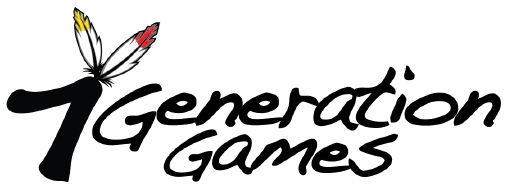What is a fair rate of pay?
The heroine in Labyrinth (fun movie, by the way) complains ,
“That’s not fair!”
and the Goblin King responds,
“You say that so often. I wonder what your standard of comparison is.”
Sunday evening and I’m taking a break from working on our latest game to offer another installment in Mama AnnMaria’s Guide on Not Getting Your Sorry Ass Fired. I was talking to my son-in-law, Mr. Perfect Jennifer, and he commented that many in his field – graphic art and animation – set their rates at what the client can be convinced to pay. If a client is somewhat naive about the going rate, they will charge two or three times as much – the sky’s the limit! What is wrong with that? Well, for one thing, if you are vastly over-charging your clients, at some point they will find out that other people are not paying $775 per hour for a statistical consultant and they will fire your sorry ass and hire someone more reasonable.
People starting out as freelancers or consultants are often unclear as what is a “fair rate of pay”.
Let me recommend this:
1. NEVER base your fees on what you “need to maintain a certain lifestyle”. Unbelievably, I have seen many people starting out set their fees exactly like this. They will tell me how expensive it is to live in San Francisco or New York City, as if that matters. Let me give you this example to show how stupid this is. You hire someone to clean your office every night. We’re not talking Trump tower here, but just your standard executive office – desk, a couple of chairs, table. Dave’s Cleaning tells you that the cost will be $3,000 a month. When you ask how he can possibly justify $$700 to clean one room, Dave explains that you are his only client. He lives in a studio apartment that costs $1,100 a month, he has to eat, doesn’t he?
2. Find statistics on rates for your field. For example, the American Statistical Association published this article in 2011 on rates for statistical consulting. You could look up your field on the Bureau of Labor Statistics site , although since that is for full-time employees, who receive benefits, you should estimate cost to the employer as 20-30% more than whatever the median salary is. What, you mean to tell me that you have no idea what the average market rate is for your services? How the hell did you come up with a rate then?
3. Figure out where you fall in the range. Do NOT, NOT, NOT look at the top of the range and say, “I could charge that much.”
The inter-quartile range for statistical consultants in 2011 was $89 to $189. That means that 75% of the consultants charged more than $89 and 25% charged $189 or more. The median was $130 an hour. Do you find yourself saying,
“Hey, I’m in at least the top 25% for sure, I could charge $189 an hour.”
What is your standard of comparison? According to the ASA, consultants who have a Ph.D. charge an average of $44 an hour more. Do you have a Ph.D.? What justifies your claim to be in the top 25% ? How many years of experience do you have? How many years does the average person in your field have? What metrics do you have that justify your claim? How much have you brought in sales, grant money, subscriptions, enrollment? Is that as much as the average person? If not, how do you justify that $130 an hour?
4. Account for your “non-monetary costs”. I have a Ph.D., 30 years of experience, have brought in tens of millions of dollars in grant funds for clients, published articles in academic journals, given hundreds of conference presentations. Would it surprise you to know that I do NOT charge in the top 25% ? There are many non-monetary factors in my consulting work, that do not apply to other consultants who charge more. I don’t come into the office before 10 a.m. I wear a suit about 10 times a year. I only take projects that interest me, working with people I like and respect. With rare exceptions (I’m looking at YOU Belcourt, ND in January) , I don’t travel to places unless I really want to go there. On the other hand, when my children were all living at home and I really needed the money, I traveled more, got up earlier, wore more suits, worked with more jackasses and charged more money. Back then, I agreed to respond to client calls or emails within an hour. Now, it is within 24 hours. I also charge less now so I can choose the clients I want to work with. (BTW, we are not taking new clients at this time.)
So, that’s it, decide a fair rate based on what the market is paying, where, based on objective criteria, your skills and experience fall compared to the general population of whatever-you-do and figure in what non-monetary requirements you or the employer have.
Charge a fair price, based on the market and your documented accomplishments , not on what you need or what you think you’re worth and you’re less likely to get your sorry ass fired.
–*—–*—–*—–
Feel smarter after reading this blog? Want to be even smarter? Buy our games, Fish Lake and Spirit Lake. Learn math, social studies and explore our virtual worlds.

